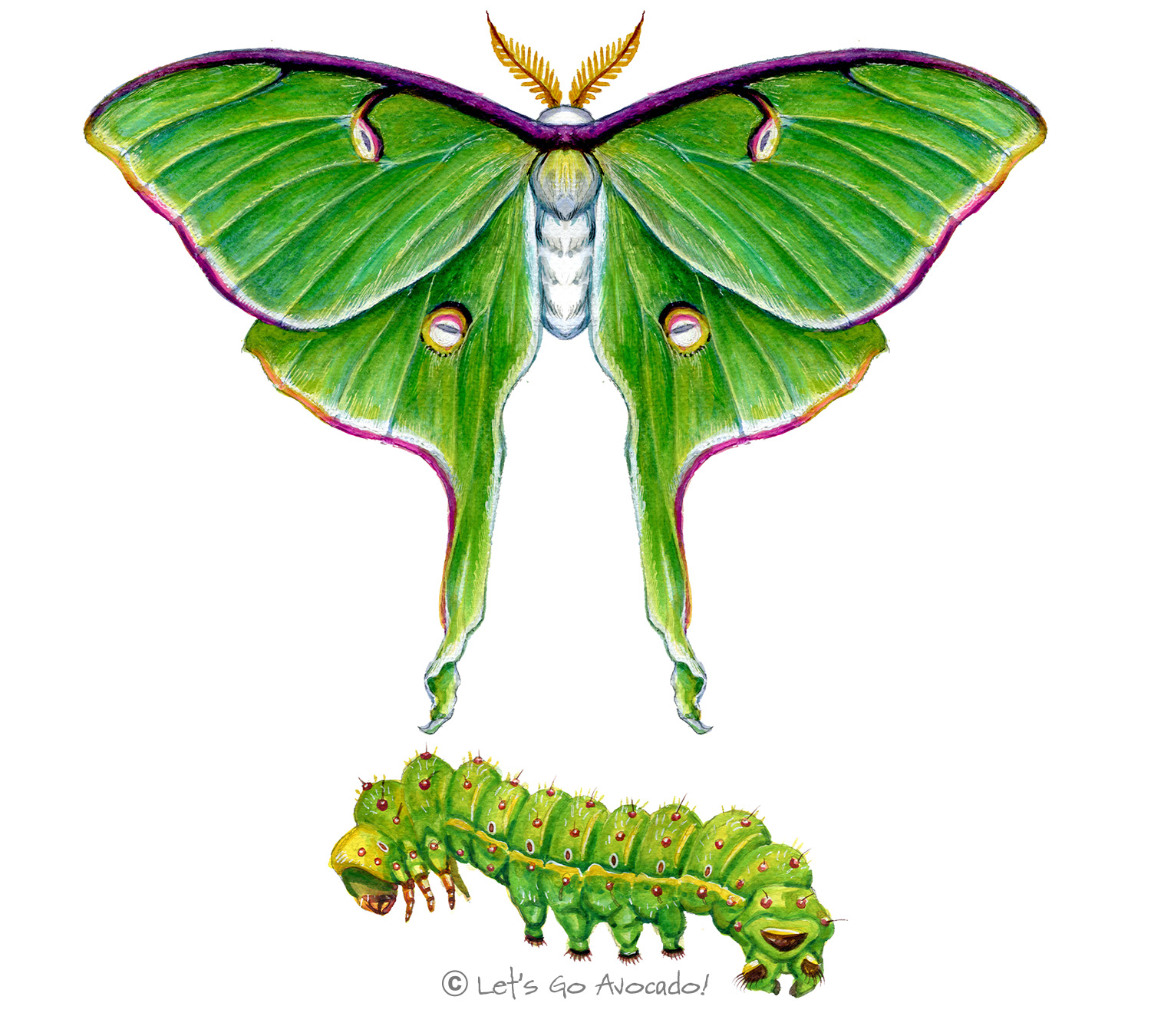

Luna Moth
Actias luna
This page may contain affiliate links.
Read our disclosure and privacy policy here.
The Luna Moth is among the most iconic and revered moths in North America, recognized instantly by its pale green coloration and long, flowing tail-like structures on the hindwings. Its nocturnalAnimals that are active during the night and rest during the day. Beavers are primarily nocturnal, doing most of their work at night. lifestyle and limited lifespan as an adult contribute to its mysterious allure.
Luna Moth
Common Name
Luna Moth
Latin Name
Actias luna
Distribution
Found throughout the deciduous forests of the eastern part of North America, ranging from Canada down to Florida and west to Texas.
Appearance
Caterpillar: The caterpillar is bright green with a white border running down its sides, small orange spots, and sparse long, bristle-like hairs.
Moth (not butterfly): The adult Luna Moth is known for its large, pale green wings and distinctive tail extensions on the hindwings. The wings also feature a transparent eyespot on each.
Size
The moth’s wingspan can range from 8 to 11.5 cm. Caterpillars can reach up to about 8 cm in length.
Habitat
Luna Moths predominantly reside in deciduous forests.
Diet
Caterpillar: They feed on a variety of deciduous trees, including walnut, hickory, sweet gum, and persimmon.
Moth: Interestingly, adult Luna Moths do not eat at all! They do not have functional mouths. Their sole purpose as adults is to reproduce.
Lifecycle
The lifecycle of the Luna Moth is standard for Lepidoptera: egg → caterpillar (larva) → cocoon (pupa) → adult moth. The entire lifecycle from egg to adult takes about a year, but adults live only about a week.
Defense Mechanisms
Caterpillar: The green coloration of the caterpillar provides camouflage amongst the leaves it feeds on. When disturbed, it may rear its front end in a “sphinx” position, potentially to seem larger or more intimidating.
Moth: The eyespots on the Luna Moth’s wings can deter predators by giving the appearance of a larger, more threatening creature. The long tails of its wings can confuse the echolocation of hunting bats.
Ecological Importance
Luna Moths play roles as pollinators and serve as a food source for various predators, thus maintaining the balance in their ecosystemsAn ecosystem is a community of living organisms, like insects and birds, and non-living components, like water and rocks, that interact with each other in a specific area. Learn More.
ConservationThe act of protecting and preserving natural resources and the environment. Conservation efforts are important to protect beavers and their habitats. Status
The Luna Moth is not classified as endangered or threatened. It’s relatively common within its range but may be less frequently encountered due to its nocturnal habits.

There’s a lot to explore right where we are, in our own neighborhoods and backyards! Join us while we get off the couch and explore the everyday wonders of nature, science, space, engineering, art, and anything else we stumble upon during on our adventures.







